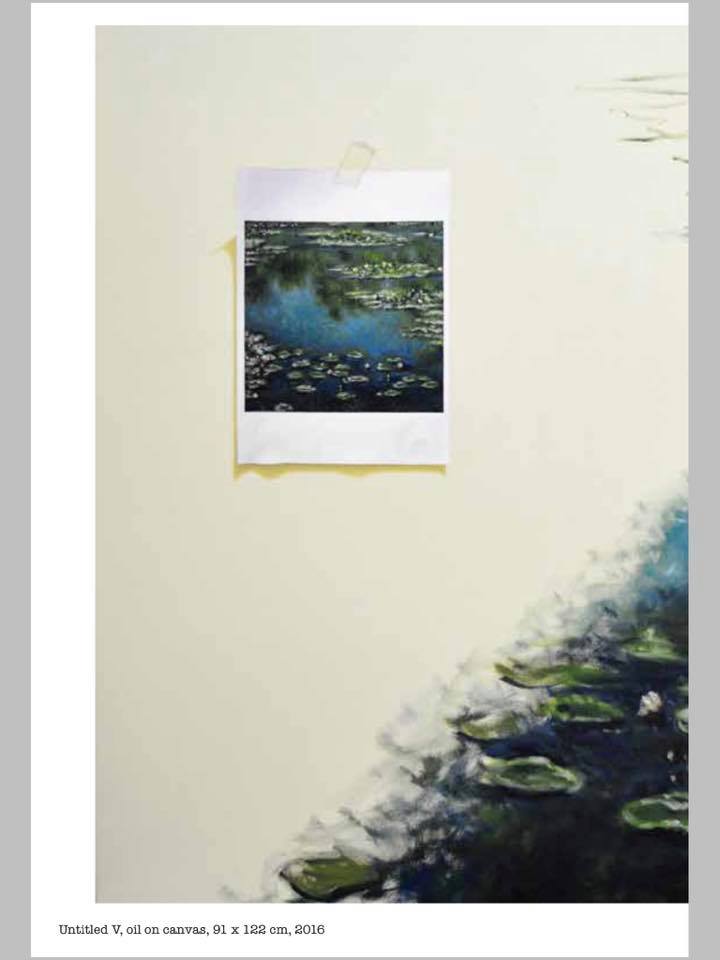In a world where all that exists is competition, how will you prove yourself just as worthy of being remembered? Such is the predicament of Kiran Sale
In a world where all that exists is competition, how will you prove yourself just as worthy of being remembered? Such is the predicament of Kiran Saleem. Her work in “To see, or not to see”, is a cry of the artist as she struggles to find her voice.
When attaining an education, in any field, the student must follow a certain curriculum; they explore all that has been done before them, revel in various notions, theories and the subsequent revelations of those that have preceded them and proved themselves worthy of being remembered. In a world that has evolved to such a degree, it is instilled in you that as soon as you are born, you will live a life in which you must fight to be remembered and sustain your relevance.
By using famous European paintings as a reference, Kiran Saleem replicates the process of the art student as she studies the styles of old masters. Her canvasses are largely empty. What she paints looks like print outs of European paintings that are easily accessible over the internet – the white margins of the prints retaining their crisp, paper quality, the edges folded and crinkled. She also paints pieces of masking tape over her subject, creating the aura of ‘reference photos’ that artists use to incorporate into their work. One asks in this scenario, is art an institutionalized practice where one meticulously imitates the styles and works of those before them? Is this really necessary, or are we conditioned to think so? Paintings that were once done from life, are now appropriations of various visuals that are accessible over the internet. Her replication of Monet’s lilies is most revealing of this; the canvas contains a seemingly printed copy of the painting on one side, with an incomplete imitation of it on it’s right.
Apart from commenting on the practice of art education itself, Saleem questions the process of art making and authorship. The schooling of art requires one to borrow, and conceive. Kiran Saleem does exactly that; although she copies these paintings to the tee, she manipulates the size onto her canvasses, making them much smaller than they originally are. She also makes executive decisions like superimposing her own face on top of the Mona Lisa, or chooses to remove Frida Kahlo’s face from the image and shift it to the side. By doing so, she remarks on the responsibility and decision-making of the artist. How far does one reference another, and still call it theirs? Her questions surrounding authorship is most present in the piece ‘Self’, where she paints the signature of Rembrandt. Would this empty canvas with a mimicked signature of Rembrandt in the bottom right hand corner still deem it her own work? She highlights the combination of subject-matter, medium and scale that the artist must decide upon to make an original piece of work.
By referencing these paintings, she not only illustrates the role of the media and technology in the art practice today, she also brings forth it’s role with respect to exposure. Such visuals that were previously geographically inaccessible to us can now be seen with the tap of a keyboard. But what one must wonder is whether changing the context of these paintings now changes it’s discourse. It appears not. Saleem recreates a portion of Lucas Cranach’s “Adam and Eve” where the nudity is relatively sheltered by leaves. Kiran Saleem also mimics Courbet’s “The Origin of the World” and paints a tape across the subject’s genitalia, commenting on the manner in which nudity is still a cause of controversy, and that censorship is still prevalent in the arts. There is an underlying notion of what an artist can and cannot make, and how far he can stretch his artistic license.
Upon speaking to Saleem, she drew my attention specifically towards her site-specific work where she had painted images of masking tape over the cracks on the wall in the gallery space. She spoke of people’s needs to find temporary solutions and create a façade of perfection. She says in her artist statement “I’m mainly concerned with seeing the truth behind things which we see in our daily life and believe in what we see, yet ignore the actual/complete truth.”
It seems that Saleem addresses multiple truths in her body of work. She shows us how we have a tendency to come up with temporary solutions without challenging the underlying problem. She addresses how artists are now being churned; who appropriate and reference and recreate as opposed to ‘draw’ inspiration. She also seems to blame censorship and the institutionalization of art – how it dictates what is worth making or admiring.
But the main question really is, what really dictates the authorship of the artist? Is it the skill behind collaging images together and making it look cohesive? Or is it the ability to communicate something authentic? To see or not to see is a plight to make the viewers address these faults in our system.

COMMENTS
WgYzNx iupcmbsqphmt, [url=http://zzteurojwzgu.com/]zzteurojwzgu[/url], [link=http://bfeopcohmyuc.com/]bfeopcohmyuc[/link], http://qdtawmqyuizz.com/